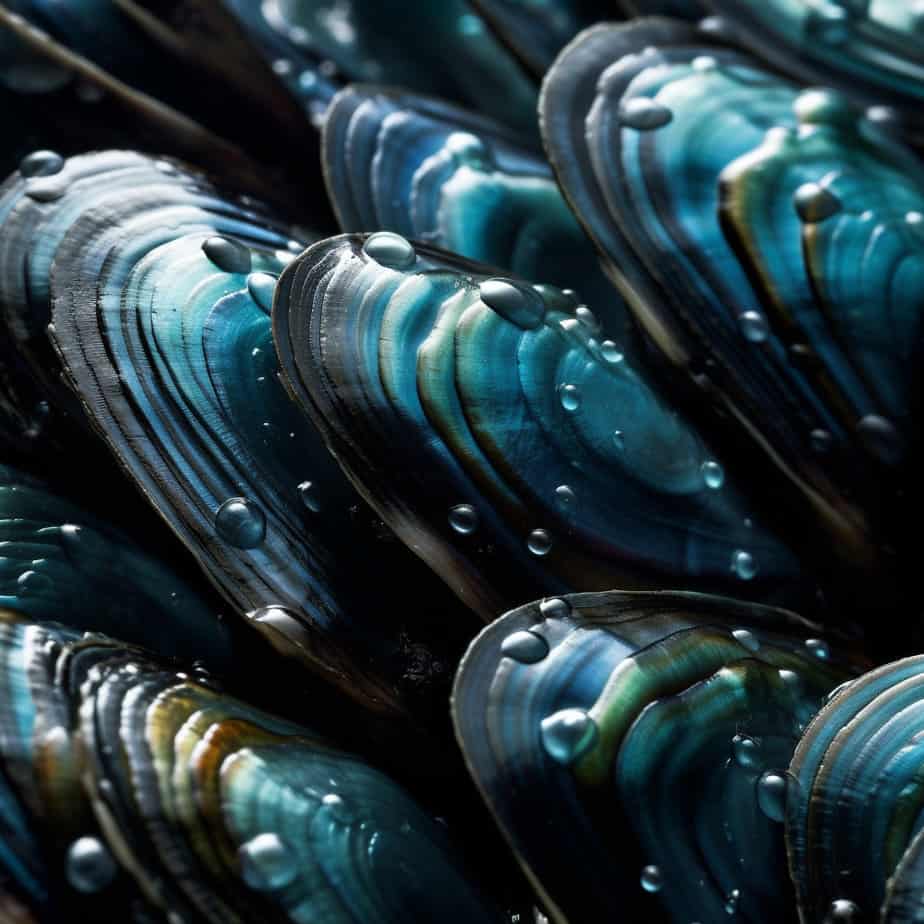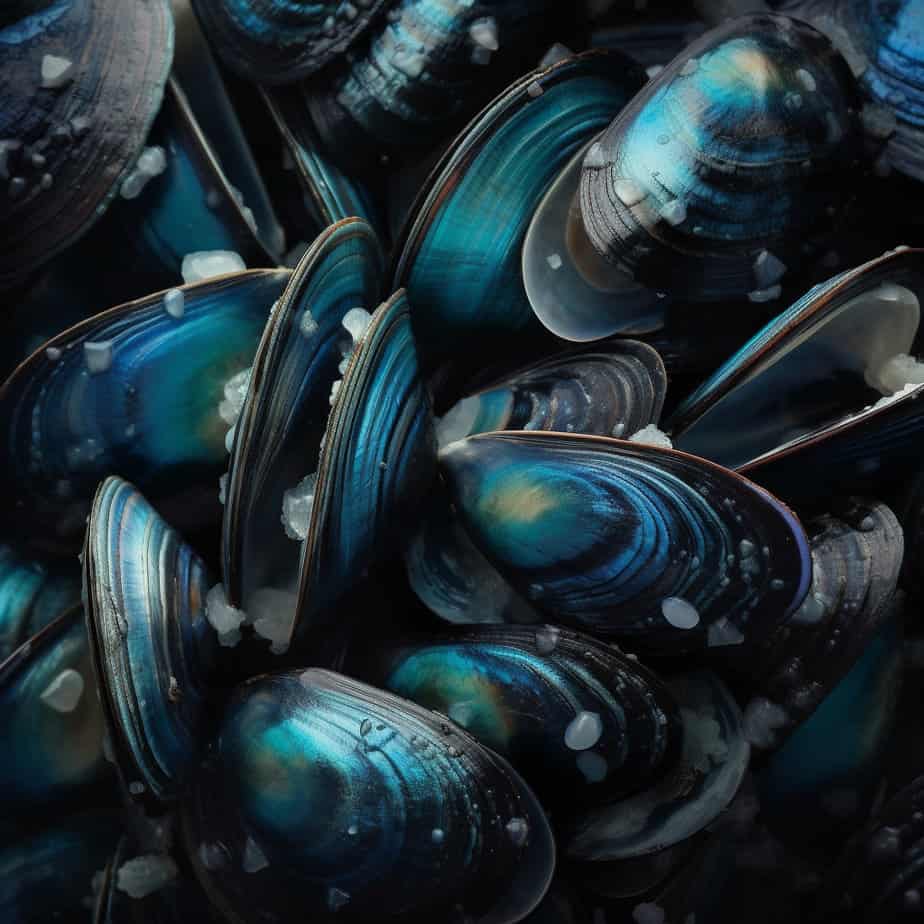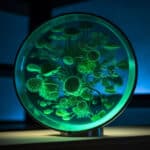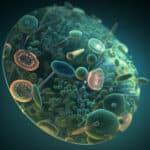Mussels, those small, bivalve mollusks that can be found in both freshwater and marine environments, are fascinating creatures with an important role in aquatic ecosystems. One of the key aspects of their diet is phytoplankton, which are microscopic plants that float in the water. These tiny organisms serve as a primary food source for many aquatic animals, including mussels. In this article, we will explore the relationship between mussels and phytoplankton, delving into how mussels consume these microscopic plants and the significance of this interaction in the larger ecological context. So, let’s dive in and discover the intriguing world of mussels and their consumption of phytoplankton.
Key Takeaways
- Mussels are filter feeders that consume phytoplankton as their primary food source.
- Phytoplankton are microscopic plants that float in the water and serve as the base of the marine food chain.
- Mussels play a crucial role in maintaining water quality by filtering large amounts of phytoplankton from the water.
- The consumption of phytoplankton by mussels helps to control algal blooms and maintain a balanced ecosystem.
Understanding Mussels: An Overview

A. The Basic Biology of Mussels
Mussels are fascinating creatures that play a vital role in our marine ecosystems. They belong to the bivalve family, which includes clams, oysters, and scallops. These mollusks have a unique feeding mechanism and are known for their ability to filter feed.
1. Anatomy of a Mussel
To understand how mussels feed, let’s take a closer look at their anatomy. Mussels have a two-part hinged shell, which they can open and close using strong muscles. Inside the shell, you’ll find the soft body of the mussel, which consists of various organs.
One of the most important organs for feeding is the gills. Mussels have specialized gills that not only help them breathe but also serve as a filtering apparatus. The gills are covered in tiny hair-like structures called cilia, which create a current of water when they beat. This current helps the mussel capture food particles suspended in the water.
2. Filter Feeding: How Mussels Eat
Mussels are filter feeders, meaning they extract food particles from the water by filtering it through their gills. They primarily feed on phytoplankton, which are microscopic algae that float near the water’s surface. Phytoplankton serve as a vital food source for many marine organisms, including mussels.
As water flows over the mussel’s gills, the cilia trap phytoplankton and other small particles. The mussel then moves these trapped particles towards its mouth using specialized structures called palps. Once the food reaches the mouth, the mussel ingests it and digests it in its stomach.
B. Habitats and Distribution of Mussels
Mussels can be found in a wide range of habitats, from freshwater rivers and lakes to saltwater estuaries and coastal areas. They are highly adaptable creatures and can thrive in both marine and freshwater environments.
1. Freshwater Mussels
Freshwater mussels are typically found in rivers, streams, and lakes. They play a crucial role in maintaining water quality by filtering out pollutants and excess nutrients. These mussels rely on phytoplankton and other organic matter as their primary food source.
2. Marine Mussels
Marine mussels, on the other hand, inhabit coastal areas and estuaries where saltwater and freshwater mix. They are often found attached to rocks, pilings, or other hard surfaces. Marine mussels also feed on phytoplankton, but they may have access to a wider variety of food sources due to the diverse marine ecosystem.
3. Distribution
Mussels have a global distribution and can be found in both temperate and tropical regions. They are particularly abundant in areas with high nutrient levels, as these conditions support the growth of phytoplankton. Mussels are an essential component of the aquatic food chain, providing food for various organisms, including fish, birds, and other marine animals.
In conclusion, mussels are remarkable creatures that rely on phytoplankton as their primary food source. Their filter feeding mechanism allows them to extract nutrients from the water, contributing to the overall health of marine and freshwater ecosystems. By understanding the basic biology and habitats of mussels, we can appreciate their important role in the intricate web of life in our oceans and waterways.
The Diet of Mussels: A Closer Look

A. Primary Food Source: Phytoplankton
Mussels are fascinating creatures that play a crucial role in the marine ecosystem. One of the key aspects of their diet is phytoplankton, which serves as their primary food source. Phytoplankton are microscopic plants that float in the ocean, harnessing energy from the sun through photosynthesis. These tiny organisms form the foundation of the aquatic food chain, providing nourishment for a wide range of marine life, including mussels.
Mussels are filter feeders, meaning they extract their food by filtering water through their gills. As water passes through their gills, mussels capture phytoplankton and other suspended particles, such as detritus and zooplankton. The mussels then extract the nutrients they need from the captured phytoplankton, while the remaining particles are expelled back into the water.
B. Do Mussels Eat Seaweed?
While mussels primarily rely on phytoplankton for their nutrition, they are also known to consume other types of food, including seaweed. Seaweeds, or macroalgae, are larger marine plants that grow in the ocean. Although mussels are not specialized seaweed eaters, they can consume small amounts of seaweed when it is available in their environment.
It’s important to note that mussels are selective feeders and have a preference for certain types of phytoplankton and algae. They tend to favor diatoms, a type of phytoplankton that possesses a hard outer shell. Diatoms are rich in nutrients and provide mussels with essential energy for growth and reproduction. However, mussels may also consume other types of phytoplankton and algae depending on their availability and nutritional value.
C. The Role of Plankton in Mussel’s Diet
Phytoplankton and other planktonic organisms play a vital role in the diet of mussels. As filter feeders, mussels rely on the abundance and diversity of plankton in their environment for sustenance. By consuming phytoplankton, mussels contribute to the regulation of phytoplankton populations, preventing excessive blooms that can disrupt the balance of the marine ecosystem.
Mussels also indirectly benefit from the consumption of zooplankton, which are tiny animals that feed on phytoplankton. When mussels filter water, they inadvertently capture zooplankton along with the phytoplankton. This provides an additional source of nutrition for the mussels, as zooplankton are rich in proteins and other essential nutrients.
In conclusion, mussels primarily eat phytoplankton as their main food source. However, they can also consume small amounts of seaweed when it is available. The consumption of phytoplankton and other planktonic organisms by mussels not only sustains their own growth and reproduction but also contributes to the overall health and balance of the marine ecosystem.
Zebra Mussels: A Unique Species
A. Zebra Mussels and Phytoplankton: A Special Relationship
Zebra mussels, a small freshwater bivalve mollusk native to Eastern Europe, have become a prominent species in many water bodies around the world. These invasive mussels have a unique feeding habit that sets them apart from other aquatic organisms. They are filter feeders, meaning they extract their food from the water by filtering out tiny particles.
One of the primary food sources for zebra mussels is phytoplankton, which are microscopic plants that float near the water’s surface. Phytoplankton play a crucial role in the marine ecosystem as they are the primary producers of oxygen and form the base of the aquatic food chain. Zebra mussels have a special relationship with phytoplankton, as they rely on them for their nutrition and growth.
When zebra mussels feed, they extend their siphons into the water and filter out phytoplankton. They use their gills, which are lined with tiny hair-like structures called cilia, to create a water current that brings in the phytoplankton. The mussels then trap the phytoplankton in their gills and consume them as a source of energy.
It is important to note that zebra mussels are highly efficient filter feeders, capable of filtering large volumes of water. A single adult zebra mussel can filter up to one liter of water per day, removing substantial amounts of phytoplankton from the ecosystem. This can have both positive and negative impacts on the environment, as it can help control excessive phytoplankton blooms but also disrupt the natural balance of the aquatic food web.
B. Do Zebra Mussels Eat Zooplankton?
While zebra mussels primarily feed on phytoplankton, they are also known to consume zooplankton, albeit to a lesser extent. Zooplankton are tiny animals that drift in the water and serve as an important food source for many aquatic organisms, including fish larvae and other filter-feeding species.
Zebra mussels have been observed to capture and consume zooplankton when phytoplankton availability is limited. However, their preference for phytoplankton remains dominant. This is because zebra mussels are more efficient at extracting and consuming phytoplankton due to their specialized feeding apparatus.
The consumption of zooplankton by zebra mussels can have implications for the overall balance of the aquatic ecosystem. A decrease in zooplankton populations can disrupt the food chain, affecting higher trophic levels and potentially leading to cascading effects throughout the ecosystem.
C. Zebra Mussels and Seaweed: Fact or Fiction?
It is a common misconception that zebra mussels consume seaweed or other types of macroalgae. However, this is not true. Zebra mussels are primarily filter feeders that rely on suspended particles in the water column, such as phytoplankton and zooplankton, for their nutrition.
Seaweeds and macroalgae, on the other hand, are larger marine plants that attach themselves to substrates like rocks or the seafloor. They are not easily accessible to zebra mussels, which primarily inhabit freshwater environments. Therefore, zebra mussels do not consume seaweed as part of their diet.
It is important to differentiate between zebra mussels and other marine bivalves, such as mussels and oysters, which may consume macroalgae. These marine bivalves have different feeding habits and adaptations that allow them to extract nutrients from larger plant material.
In conclusion, zebra mussels have a unique feeding habit that revolves around filter feeding and consuming phytoplankton. While they may also consume zooplankton, their primary reliance on phytoplankton distinguishes them from other aquatic organisms. It is crucial to understand the feeding habits of zebra mussels to comprehend their impact on the marine ecosystem and effectively manage their populations.
Ribbed Mussels: Another Interesting Species
A. Ribbed Mussels and their Preference for Zooplankton
Ribbed mussels, scientifically known as Geukensia demissa, are fascinating creatures that play a vital role in the marine ecosystem. These bivalves are filter feeders, meaning they obtain their nutrition by filtering water and consuming small particles suspended in it. While they primarily feed on phytoplankton, the microscopic plants that float in the ocean, they also have a preference for zooplankton.
Zooplankton, unlike phytoplankton, are tiny animals that drift in the water column. They include small crustaceans, larval fish, and other microscopic organisms. Ribbed mussels have adapted to consume these zooplankton species as part of their diet. By consuming zooplankton, ribbed mussels contribute to the balance of the aquatic food chain.
To capture their prey, ribbed mussels extend their siphons into the water, filtering out particles as small as a few micrometers. They draw in large volumes of water, extracting the necessary nutrients from the zooplankton. This feeding behavior not only sustains the mussels but also helps maintain the overall health of the marine ecosystem.
B. Comparing Ribbed Mussels and Zebra Mussels in Diet
While ribbed mussels feed on both phytoplankton and zooplankton, zebra mussels (Dreissena polymorpha) have a different dietary preference. Zebra mussels are known to primarily consume phytoplankton, making them more specialized in their feeding habits compared to ribbed mussels.
The difference in diet between these two mussel species can have significant implications for the aquatic environment. Zebra mussels, being highly efficient filter feeders, can consume large quantities of phytoplankton, potentially leading to a decrease in phytoplankton populations. This reduction in phytoplankton abundance can disrupt the delicate balance of the marine food web, affecting other organisms that rely on phytoplankton as a food source.
On the other hand, ribbed mussels, with their broader diet that includes both phytoplankton and zooplankton, contribute to a more balanced ecosystem. By consuming zooplankton, ribbed mussels indirectly regulate the population of these small animals, preventing their overabundance. Additionally, the consumption of phytoplankton by ribbed mussels helps maintain a healthy level of these primary producers in the water, supporting the overall productivity of the marine environment.
In summary, ribbed mussels are an interesting species that not only consume phytoplankton but also have a preference for zooplankton. This diverse diet allows them to play a crucial role in maintaining the balance of the marine food web. In contrast, zebra mussels primarily feed on phytoplankton, potentially leading to imbalances in the ecosystem. Understanding the feeding habits of these mussel species is essential for comprehending the intricate dynamics of the aquatic world.
Mussels in the Ocean: What Do They Eat?

A. The Oceanic Diet of Mussels
Mussels, those small and unassuming bivalve mollusks, play a crucial role in the marine ecosystem. They are filter feeders, meaning they obtain their nutrition by extracting tiny particles from the water. But what exactly do mussels eat? The answer lies in the vast and diverse world of phytoplankton.
Phytoplankton, microscopic plant-like organisms that drift in the ocean, form the primary food source for mussels. These tiny organisms are abundant in the ocean and are responsible for producing a significant portion of the Earth’s oxygen. Mussels, with their remarkable ability to filter large volumes of water, capitalize on this abundant food source.
When mussels open their shells, they extend a specialized structure called a siphon into the water. Through this siphon, they draw in water along with suspended particles, including phytoplankton. Once inside the mussel, the water is expelled, while the nutritious phytoplankton is retained for consumption. This feeding mechanism allows mussels to efficiently extract nutrients from the water column.
B. Clams Vs. Mussels: A Comparative Study
While mussels and clams may appear similar, there are notable differences in their feeding habits. Clams, like mussels, are filter feeders and also rely on phytoplankton as a primary food source. However, their feeding strategies differ slightly.
Mussels tend to be more efficient filter feeders compared to clams. They have a higher filtration rate, allowing them to extract a greater amount of phytoplankton from the water. Additionally, mussels have a higher metabolic rate, enabling them to process and utilize the nutrients more efficiently.
On the other hand, clams have a slightly different feeding mechanism. They extend two siphons into the water, one for inhalation and the other for exhalation. This dual siphon system allows clams to maintain a steady flow of water through their bodies, maximizing their chances of capturing phytoplankton.
In terms of diet, both mussels and clams primarily consume phytoplankton. However, they are not limited to this food source alone. Mussels, being opportunistic feeders, can also consume other suspended particles, such as zooplankton and detritus. Similarly, clams may also ingest small organisms like bacteria and other organic matter.
In summary, mussels and clams share a similar diet of phytoplankton, but mussels have a more efficient filtration system and a broader range of food sources. These bivalve mollusks play a vital role in maintaining the balance of the marine food web, as they serve as a link between the microscopic world of phytoplankton and the larger organisms in the ocean.
| Mussels | Clams | |————-|———–| | Efficient filter feeders | Dual siphon system | | Higher filtration rate | Steady flow of water | | Broader range of food sources | Primarily consume phytoplankton | | Opportunistic feeders | Ingest small organisms and organic matter |
By understanding the feeding habits of mussels and clams, we gain insight into the intricate dynamics of the marine ecosystem. These fascinating creatures not only contribute to the health of our oceans but also provide a valuable food source for various marine organisms. So, the next time you come across a mussel or clam, remember the vital role they play in the underwater world. Conclusion
In conclusion, mussels are filter feeders that play a crucial role in aquatic ecosystems by consuming phytoplankton. These small but mighty creatures use their specialized gills to filter water and extract nutrients from the surrounding environment. By consuming phytoplankton, mussels help to regulate the population of these microscopic algae, preventing excessive growth and maintaining a healthy balance in the ecosystem. Additionally, mussels serve as an important food source for other organisms, contributing to the overall biodiversity of the ecosystem. Understanding the feeding habits of mussels and their impact on phytoplankton populations is essential for the management and conservation of aquatic environments. Further research in this field will continue to shed light on the intricate relationships between mussels, phytoplankton, and the wider ecosystem.
Frequently Asked Questions
Q1: Do mussels eat seaweed?
No, mussels do not typically eat seaweed. They are filter feeders and primarily consume phytoplankton and other small particles suspended in the water.
Q2: Does mussels eat phytoplankton?
Yes, mussels do eat phytoplankton. As filter feeders, they extract phytoplankton from the water for nutrition, playing a crucial role in the marine ecosystem.
Q3: Do zebra mussels eat zooplankton?
Yes, zebra mussels can eat zooplankton. While their primary food source is phytoplankton, they are known to consume small zooplankton as part of their diet.
Q4: Do mussels eat plankton?
Yes, mussels do eat plankton. They are filter feeders and consume both phytoplankton and small zooplankton.
Q5: Do ribbed mussels eat zooplankton?
Yes, ribbed mussels can eat zooplankton. However, their primary food source is phytoplankton and other small particles in the water.
Q6: Do zebra mussels eat phytoplankton?
Yes, zebra mussels do eat phytoplankton. They filter the water for phytoplankton and other small particles, contributing to water filtration in their habitats.
Q7: What do mussels eat in the ocean?
In the ocean, mussels primarily eat phytoplankton. They filter the water for these tiny, photosynthesizing organisms, along with other small particles.
Q8: Do zebra mussels eat seaweed?
No, zebra mussels do not typically eat seaweed. They primarily consume phytoplankton and small zooplankton.
Q9: What do clams eat besides plankton?
Besides plankton, clams also eat detritus and organic matter that they filter from the water. This includes algae, bacteria, and microscopic organisms.
Q10: Do zebra mussels eat plankton?
Yes, zebra mussels do eat plankton. They filter the water for phytoplankton and small zooplankton, playing a significant role in the aquatic food chain.




